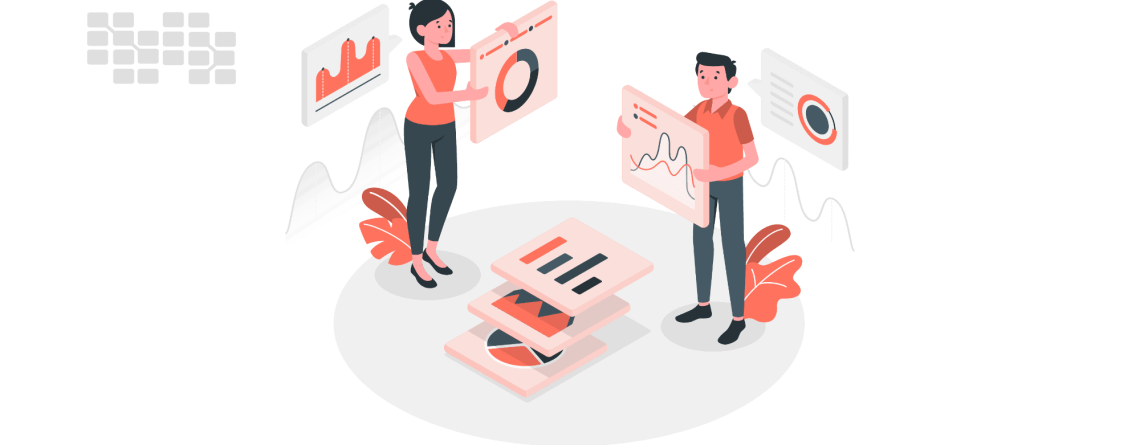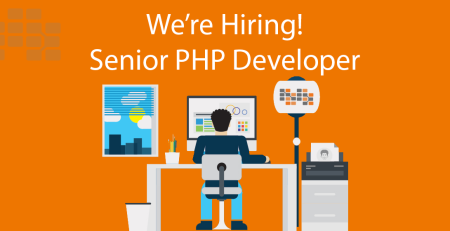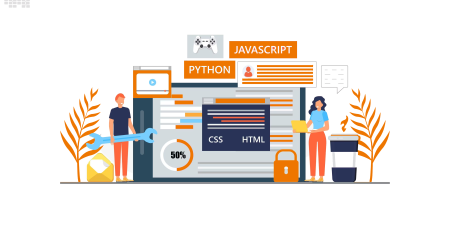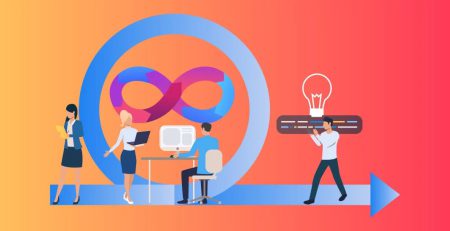Everything You Need To Know About Data Analyst
Marketing, retail, banking, law enforcement, research, government, and medical are just a few of the industries that use data analysis. And, as the amount of data available grows, so does the demand for data analysts, which is predicted to increase by 25% by 2030. But what exactly does a data analyst do with all that information? Continue reading to learn more.
What Is a Data Analyst?
A data analyst studies and interprets data, using these insights to help their organizations make better decisions and perform more effectively. They use critical and analytical thinking skills to ask the questions that need to be answered, find the data sets that can provide those answers, prepare and interpret the data, and then communicate their findings.
What Does a Data Analyst Do?
Data analysts do a variety of tasks depending on their business, but they all begin by mining and organizing data. The data analysis life cycle starts with discovery and ends with the deployment of models based on their findings. They start with raw data, decide what’s important and what’s not, and then analyze the important data to find patterns and trends.
Discovery
The data analytics team learns about the problem they’re seeking to address throughout the discovery process, and they may consult relevant experts to better comprehend the situation. Then they’ll figure out which data sources are relevant. They may now collaborate with data scientists to develop innovative methods for capturing the data they require.
They’ll figure out how the data will assist their organization and what story they want to tell with it at this point. They’ll then come up with a hypothesis to test with data.
For example, a healthcare data analyst would be interested in learning about the risk factors for an opioid overdose. They will choose which data sets will best reveal those trends and how to access them during the questioning phase. They’d also think about the tools they’ll need. The analyst can make the assumption that certain preexisting conditions are a risk factor for opioid overdose and devise a strategy for evaluating that hypothesis.
Collecting and Gathering Data (Data Preparation)
The focus of the data preparation phase turns to the data itself. Data analysts determine what data they have access to and obtain it from various sources, including:
- Data entry: Manually entering data or using digital systems to collect data
- Data acquisition: Collecting data from external sources
- Signal reception: Collecting data from digital devices, such as control systems and smart devices
Healthcare analysts might gather information from insurance claims, death certificates, and arrest records, for example.
Data Cleaning
Data cleaning is the process of eliminating or correcting incomplete, erroneous, corrupted, duplicated, or poorly formatted data before analyzing it. When merging several data sources, cleaning is critical because there is a significant likelihood of duplication.
Cleaning data includes the following steps:
- Remove duplicate or irrelevant data
- Fix structural errors
- Get rid of irrelevant outliers
- Decide how to handle incomplete data
- Validate the data
In the case of the healthcare analyst, data from duplicate claims or errors would be removed, and extraneous data, such as arrest records for crimes not involving opioids, would be excluded. They may discard incomplete data or fill up blanks with corresponding data.
Data Analyzing
Data analysts use planning and modelling to uncover trends and test ideas throughout the analysis stage. These models are used to find correlations between key variables and then tested to see if they match the data.
The analyst will run models and use visualization tools to highlight how diverse variables, such as underlying conditions and medication use, correspond to opioid overdoses when examining opioid overdose data.
Data Interpreting
Data analysts make sense of their data during the interpretation phase by identifying patterns and trends that help answer the questions posed during the discovery phase. For example, a healthcare analyst might uncover that multiple previous medical conditions are linked to opiate overdose. Doctors may be able to use a screening tool to detect which patients are most likely to overdose.
Sharing Data Insights
Data analysis is a highly technical field, and laypeople frequently require assistance in comprehending the findings. As a result, data analysts must be able to convey and summaries their significant results. Data visualization tools, reports, and presentations can all help with this. The healthcare analyst might offer a presentation that begins with a graph showing how each prior illness is linked to opioid overdoses, and then expands on this with a written report.
Operationalizing
Finally, data analysts must put their conclusions into practice. Data analysis and implications are used to test a trial project before it is completely implemented. On a modest scale, this test will reveal any performance or limits.
In the case above, a data analyst might create a screening test for clinicians to determine whether patients are at danger of opioid overdose. Before making the screener broadly available, they may give it to doctors in a certain medical system to get feedback and perfect it.
Data Analyst Job Description
Data analysts deliver data-driven insights that are useful. This position can cover a wide range of tasks, from forecasting which commercials will convert the most customers to preventing accidental drowning. The specifics of a data analyst’s job will differ depending on the industry and organization they work for, but the skills and qualifications are universal.
Data analysis is a specialized discipline that necessitates extensive education and expertise. Analysts should have the following hard and soft skills in addition to a bachelor’s degree or its equivalent in academic and technical knowledge:
Hard Skills for Data Analysts
Statistics and Mathematics
The heart of data analysis is statistics. It’s at the heart of the data collection, review, analysis, and interpretation algorithms. To create the models needed to analyze data, data analysts also need a solid understanding of algebra, calculus, and discrete mathematics.
Programming language expertise
Python and R are the two most popular data analysis programming languages. As a data analyst, you won’t need to write many unique programs, but you will need to comprehend and use bundled techniques in R or Python.
Data visualization
An auto-generated Excel pie chart or an interactive Tableau dashboard are both examples of data visualization. There are several data visualization tools available, including Tableau. No matter which technology you use, data visualization is critical for effectively presenting your findings.
Database knowledge
You’ll need to create and maintain an accessible yet secure database. When working with massive databases, SQL will be your primary tool.
Familiarity with data science and machine learning
Data scientists create and design novel data modelling procedures. While you will not be expected to do so, you will need to be familiar with the process in order to work well with data scientists. Machine learning is also used by data scientists to automate the creation of analytical models, so you’ll need to be familiar with their capabilities and limits.
Soft Skills for Data Analysts
Data storytelling
Data storytelling is the ability to use a captivating narrative and graphics to express your data’s insights and predictions. Charts and graphs can convey data, but if you want people to remember and care about it, you’ll need to weave a story around it.
Collaborative nature and leadership skills
Experts, managers, data scientists, programmers, and IT teams cooperate with data analysts. To facilitate this teamwork, you’ll need good communication and leadership skills.
Problem-solving
Problems are solved by data analysts. Using a design-thinking perspective to approach data problems can help you expand your ideas and identify new answers.
Critical thinking
All steps of data analysis, from creating the right questions to analyzing the data to communicating your conclusions, require critical thinking. Unintended and illogical relationships can be found in large data sets. Critical thinking abilities will aid you in determining which correlations are valid and which are not.
Data Analytics Tools You Should Know
Data analysts acquire, transform, and analyze data using a range of tools. They usually employ the following instruments:
Microsoft Excel
This all-in-one spreadsheet software can work with tiny data sets or perform preliminary data analysis. While most large projects employ more powerful software, data analysts frequently employ Excel. Before employing more specialist tools like SQL, Excel is good for getting a general overview of data.
SQL
You can use SQL to store, manipulate, and retrieve data from a database. SQL stands for Structured Query Language. SQL databases can store a lot more information than spreadsheets. It organizes and maintains data in systems with multiple data relationships.
R or Python
Both R and Python are open-source programming languages that excel in data analysis. There is a heated argument regarding which is superior, but each has its own set of advantages and disadvantages. Python is a comprehensible, general-purpose programming language that is one of the most widely used in the world. Python comes with a number of libraries that help with data science and machine learning applications, including:
- NumPy for working with large dimensional arrays
- Pandas for data manipulation and analysis
- Matplotlib for data visualization
- Scikit-learn, Keras, and TensorFlow for machine learning
R is not as well-known as Python, but it is better suited to statistical analysis and data visualization. It includes complex data models as well as data reporting tools. Over 13,000 deep analytics packages are available on the Comprehensive R Archive Network (CRAN). R was created by statisticians and is mostly used for statistical analysis, but Python is more versatile.
SAS
Statistical Analytics Software is what SAS stands for. It uses SQL queries to retrieve, report, and analyze statistical data and macros to automate processes. SAS, unlike R and Python, is a proprietary program. SAS has a number of advantages, including:
- A simple syntax that can be learned without prior programming experience
- Ability to handle large databases
- Error log that helps with debugging
- Easily test and analyze algorithms
- Enhanced security prevents extraction without a license
Tableau
Tableau is the most popular data visualization software. It allows you to create interactive maps, dashboards, and stories for data analysis, in addition to standard graphs and charts. Tableau encourages data exploration and discovery. Tableau does not require programming knowledge, and you may mix data sets to produce reports. Tableau is accessible in a variety of forms, each with its own set of capabilities. Tableau offers several free choices, including:
- Tableau Public: Allows anyone to download your files and workbooks
- Tableau Reader: A desktop app that lets you view and interact with reports
- Tableau Mobile: Allows you to check data and reports on the go and view interactive previews
Tableau’s paid versions include:
- Tableau Desktop: Store your reports, dashboards, and stories locally or publicly
- Tableau Server: Used to share workbooks across teams
- Tableau Online: Hosted on the cloud and allows you to connect to cloud databases
Microsoft Power BI
Another data visualization and business intelligence tool is Microsoft Power BI. It performs data analysis, manipulation, and visualization in the same way as Tableau does. Power BI is simple to use and less expensive than Tableau’s premium versions. Tableau, on the other hand, has more features and performs better with larger data sets.
Jupyter Notebook
Jupyter Notebook is a free and open-source web-based application for exploratory data analysis. It supports around 40 languages, although Python is the most popular. Inputs and outputs can be combined into a single document that includes:
- Visualizations
- Statistical modeling
- Mathematical equations
- Narrative text
Because Jupyter Notebook allows all users to develop, visualize outcomes, and add information, it makes collaboration straightforward.
How To Become a Data Analyst
There are numerous paths to becoming a data analyst, but they all share some characteristics. You can start a new job as a data analyst by following these steps:
Build Your Foundation
A data analyst should have a bachelor’s degree in statistics, computer science, math, or information technology. However, many people are opting for a different route, like as bootcamps or certificates. The majority of these courses begin with technical knowledge and languages like SQL, Microsoft Excel, R, and Python. If you work in a supporting capacity, such as IT, you can study on the job as well.
Grow Your Skills
Begin by learning how to use the tools listed above. However, knowing your industry is also crucial. If you want to work in finance, having a business experience will give you an advantage.
There are many different types of data analysis, so if you want to specialize, concentrate on obtaining those skills. Many large companies, for example, have data analysts that specialize in data visualization.
Create a Portfolio
A portfolio is the most effective approach to show off your data analytic abilities. You can begin with your own projects, but it’s critical to show that you can solve real-world challenges and collaborate with others. Freelancing or volunteering for a cause can help you gain the experience that hiring managers are looking for.
Apply for Entry-Level Roles or Complementary Jobs
Start applying for entry-level data analyst employment once you’ve developed your abilities and prepared your portfolio. Maintain your professional profiles and seek out leads from your network. You might have more luck finding a position that complements your data analysis talents and then moving laterally.
Data analysts provide critical insights into human behavior that assist businesses in making better decisions. It’s a gratifying, well-paid, and in-demand profession. Data analysts can detect hidden patterns, trends, and correlations by following the step-by-step data analysis life cycle method and working with computer languages and tools.
Data analysts are used by organizations and enterprises across many industries to make critical decisions such as:
- What products to develop
- Which markets to enter
- Which investments to make
- How to target customers
- How to improve product safety and efficiency
A data analyst might be trained throughout college or through a bootcamp. Either path will provide you with the knowledge and tools necessary to unlock the mysteries of big data and apply them to smart and efficient organizational strategies.
FAQs About Data Analytics
Can a College Freshman Become a Data Analyst?
A college diploma or the equivalent in knowledge and experience is required for most data analyst employment. A first-year university student would struggle to attain that level of study and skill.
Do You Need a Degree To Become a Data Analyst?
A bachelor’s degree or equivalent is required for most entry-level data analyst employment. However, online certification programs or bootcamps can help you become a data analyst, especially if you have a degree or expertise in the field you want to work in. If you have work experience as a biologist and wish to work as a data analyst, for example, your experience will provide you an advantage. If you don’t have a college diploma, your portfolio and resume will be even more crucial in displaying your abilities.
Do Data Analysts Code?
Although data analysts code, they do not code in the same way that software engineers do. For statistical analysis, data analysts must understand and use R or Python libraries. Large databases are also managed, manipulated, and analyzed using SQL. Many data analysis tools, such as Jupyter Notebook and SAS, require some code.
You should be conversant with the key data-related packages in Python and R to be marketable as a data analyst. Although you won’t be required to create machine learning models, you should have a basic understanding of how they work.













Leave a Reply